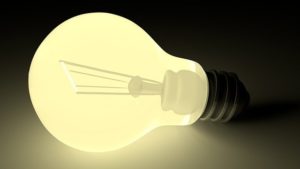
When researching backlighting solutions, you may come across electroluminescent (EL). Many devices feature backlighting. From keypads and switches to touchscreens and human machine interfaces (HMIs), it’s used to illuminate the display and/or interface. While some devices feature light-emitting diode (LED) backlighting, though, others feature EL backlighting. What is EL backlighting exactly, and how does it work?
The Basics of EL Backlighting
EL backlighting is characterized by the use of phosphor compounds and electricity to illuminate a given device. There are different types of backlighting. As previously mentioned, some devices feature LED backlighting. Regardless, all types of backlighting consist of a lighting system that’s designed to illuminate the display and/or interface of a device. EL backlighting simply uses phosphor compounds and electricity for this purpose.
How EL Backlighting Works
Even if you’re familiar with the definition of EL backlighting, you might be wondering how it works. EL backlighting can be implemented in different ways. One of the most common ways in which it’s implemented involves printing. Phosphor compounds are printed between two electrically conductive layers. When a direct current (DC) voltage is applied to one of the layers, electricity will flow through it while reaching the phosphor compounds.
Phosphor compounds illuminate when exposed to electricity. It has luminescent properties in this regard. Electricity will essentially “excite” the phosphor compounds, which causes them to illuminate. With EL backlighting, electricity is applied to the phosphor compounds so that they illuminate the device’s display and/or interface.
Pros and Cons of EL Backlighting
EL backlighting produces even and consistent lighting for devices. You don’t have to worry about some areas of the device’s display and/or interface being brighter than others. EL is a uniform type of backlighting that offers even and consistent lighting.
EL backlighting is energy efficient. It still consumes energy. After all, electricity is needed to make the phosphor compounds produce light. With that said, EL backlighting is energy efficient, meaning it doesn’t consume a substantial amount of energy in the form of electricity.
When compared to LED backlighting, on the other hand, EL backlighting has a shorter lifespan. It doesn’t last as long as LED backlighting. Therefore, it’s typically used for applications in which the device doesn’t stay on. If you’re planning to keep the device on at all times, you may want to choose LED backlighting, instead. LED backlighting lasts longer while offering similar energy-efficient benefits.
